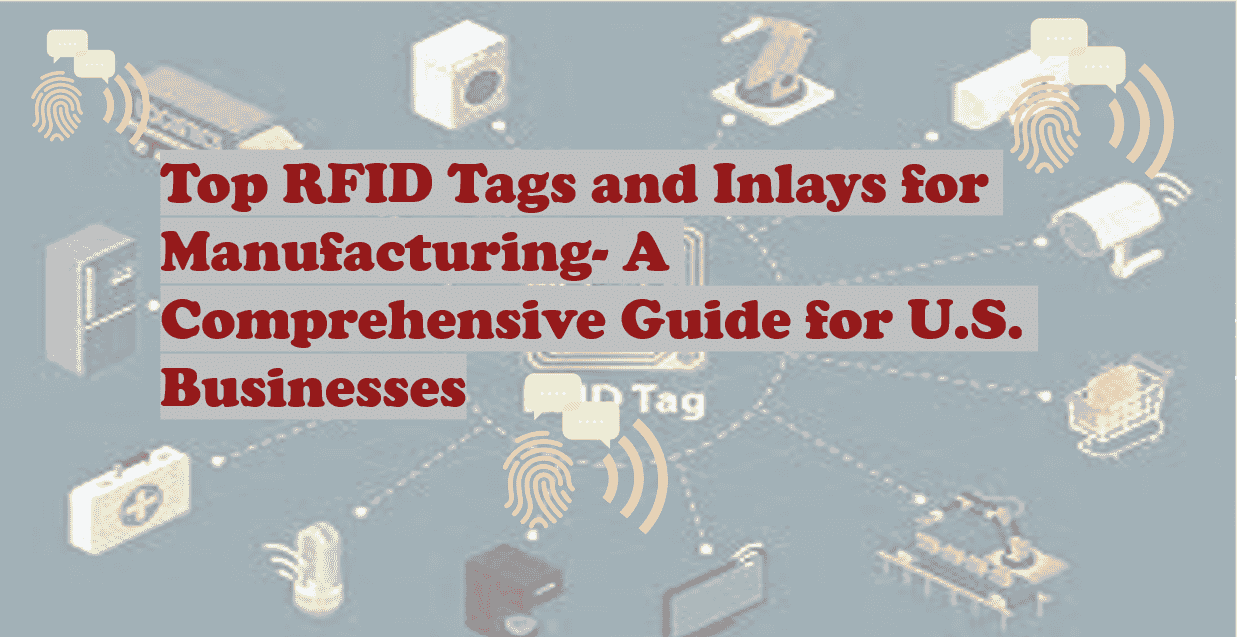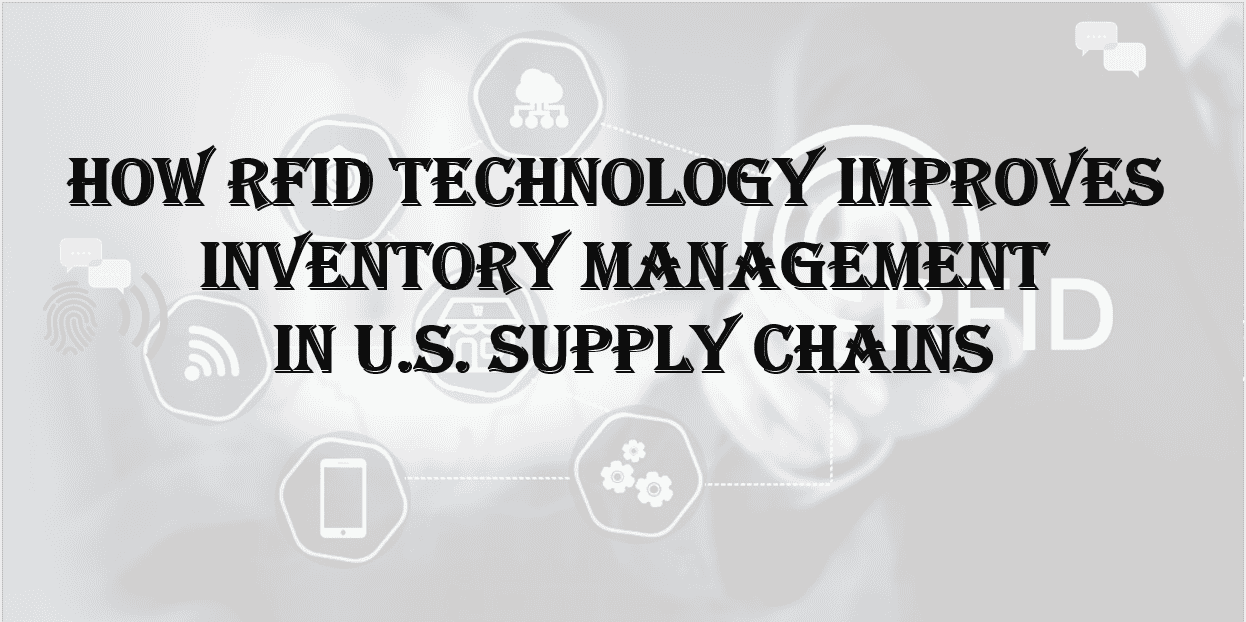Top RFID Tags and Inlays for Manufacturing- A Comprehensive Guide for U.S. Businesses

Top RFID Tags and Inlays for Manufacturing: A Comprehensive Guide for U.S. Businesses
In recent years, Radio Frequency Identification (RFID) technology has emerged as a game-changer in the manufacturing sector. RFID tags and inlays have proven their value in enhancing operational efficiency, improving inventory management, reducing human error, and streamlining supply chain processes. For U.S. businesses seeking to stay competitive in a rapidly evolving market, integrating RFID solutions into manufacturing processes is essential.
In this comprehensive guide, we will explore the top RFID tags and inlays tailored for different manufacturing sectors, helping you understand which solutions are best suited to meet your business needs.
Table of Contents
- Introduction: The Role of RFID in Manufacturing
- Types of RFID Tags and Inlays for Manufacturing
- Popular RFID Solutions for Different Manufacturing Sectors
- Conclusion: Maximizing the Potential of RFID in Manufacturing
What is RFID and How Does it Benefit Manufacturing?
RFID is a technology that uses electromagnetic fields to automatically identify and track tags attached to objects. Unlike traditional barcodes, RFID tags do not require a direct line of sight to be read, making them ideal for environments where speed and efficiency are critical.
In manufacturing, RFID technology offers a range of benefits, including:
- Real-time tracking: Monitor the movement of raw materials, components, and finished goods.
- Inventory accuracy: RFID systems ensure precise stock counts, reducing stockouts and overstocking.
- Improved supply chain management: Enhance visibility across the entire supply chain, from production to shipping.
- Automation: Minimize manual data entry, which reduces human errors and operational costs.
- Asset management: Keep track of machinery, tools, and equipment for maintenance scheduling and lifecycle management.
Types of RFID Tags and Inlays for Manufacturing
RFID tags and inlays are available in various designs and configurations, depending on the specific needs of the manufacturing process. Let’s explore the most commonly used RFID solutions for the industry.
1. Passive RFID Tags
Passive RFID tags are the most common type used in manufacturing. They do not require an internal power source; instead, they draw power from the radio waves emitted by an RFID reader. These tags are cost-effective and have a relatively long lifespan, making them ideal for large-scale inventory tracking and supply chain management.
Best for:
- Inventory tracking
- Work-in-progress (WIP) management
- Asset tracking
2. Active RFID Tags
Active RFID tags, unlike passive tags, have their own battery that powers the tag, allowing for longer read ranges and more advanced features such as real-time data transmission. These tags are more expensive but are ideal for environments where long-range communication is required, such as tracking heavy equipment or large assets across expansive manufacturing facilities.
Best for:
- Heavy machinery and equipment tracking
- High-value asset management
- Large manufacturing plants
3. Semi-Passive RFID Tags
Semi-passive RFID tags combine the benefits of both passive and active tags. They contain an onboard battery, which powers the tag’s circuitry, but they still rely on the reader’s signals for data transmission. These tags offer a middle ground between cost and functionality.
Best for:
- Medium-range asset tracking
- Real-time work-in-progress monitoring
4. UHF RFID Tags
Ultra High Frequency (UHF) RFID tags are widely used in manufacturing due to their longer read ranges and high data transfer speeds. UHF tags can be read from several meters away, making them ideal for tracking goods across large facilities and warehouses. These tags are also capable of holding a significant amount of data, which can be useful for inventory control and logistics.
Best for:
- Warehouse management
- Supply chain tracking
- Automated assembly lines
5. HF RFID Tags
High Frequency (HF) RFID tags are shorter range tags typically used in more localized applications. They are ideal for situations where high accuracy is required but where the distance between the RFID tag and reader does not need to be extensive. HF tags are especially useful in environments where products and equipment are handled in close proximity, such as in high-precision manufacturing.
Best for:
- Tool tracking
- Equipment management
- Access control
6. On-Metal RFID Tags
On-metal RFID tags are designed for use on metallic surfaces, which can interfere with traditional RFID signals. These specialized tags have been optimized for durability and reliability in environments where assets are made from metal, such as in aerospace, automotive, and heavy machinery industries.
Best for:
- Metal component tracking
- Automotive and aerospace parts
- Industrial equipment
Popular RFID Solutions for Different Manufacturing Sectors
Manufacturing industries in the U.S. vary widely in their requirements, and RFID solutions need to be tailored to each sector. Below are some popular RFID solutions for specific manufacturing sectors:
1. Automotive Manufacturing
In automotive manufacturing, RFID tags are crucial for tracking components through the production line and managing parts inventory. For example, RFID can help manufacturers manage just-in-time inventory, reducing warehouse space and eliminating stockouts. On-metal RFID tags are commonly used for automotive components such as metal frames, wheels, and engines.
Top RFID Solution:
- Zebra Technologies RFD90 UHF RFID Reader
- Provides high read ranges, ensuring accurate inventory tracking on large automotive assembly lines.
- Ideal for use with on-metal RFID tags for tracking vehicle parts.
2. Aerospace and Defense
The aerospace and defense industries require robust RFID systems to manage high-value assets and parts. RFID helps track components across different stages of production, ensuring compliance with strict regulations and providing full traceability. Additionally, RFID is used to monitor the maintenance and lifecycle of equipment in these highly regulated industries.
Top RFID Solution:
- Honeywell IF2 Inlay
- Offers strong performance in harsh environments, ideal for the aerospace industry.
- Durable and designed to withstand extreme temperatures and vibration.
3. Food and Beverage Manufacturing
RFID is particularly useful in the food and beverage industry, where maintaining temperature and humidity conditions is critical. RFID tags can help track products through cold storage, monitor expiration dates, and ensure compliance with food safety regulations. UHF RFID tags are frequently used to monitor large volumes of raw materials, finished goods, and pallets.
Top RFID Solution:
- Impinj Speedway Revolution R420 Reader
- Designed for fast, high-volume applications, perfect for large-scale inventory tracking in food and beverage production.
4. Electronics Manufacturing
Electronics manufacturers require precision and high-level control over their supply chain, as components can be small and highly valuable. RFID technology allows for real-time tracking of both raw materials and finished products. HF RFID tags are particularly effective in electronics manufacturing for asset management and tracking tools.
Top RFID Solution:
- Alien Technology ALR-F800 UHF RFID Reader
- Excellent for tracking small parts and components in electronics manufacturing environments.
Conclusion
RFID technology offers significant advantages for manufacturing companies in the U.S., from improving operational efficiency to ensuring supply chain transparency. By selecting the right RFID tags and inlays for your industry, businesses can boost productivity, enhance inventory management, and streamline workflows. Whether you're in automotive manufacturing, aerospace, food and beverage, or electronics, there is an RFID solution that can meet your specific needs. By adopting RFID technology, U.S. manufacturers are well-positioned to stay ahead in the competitive global marketplace.
Related Products
1. RFID Market Growth
- The global RFID market size was valued at USD 11.21 billion in 2021 and is expected to expand at a CAGR (Compound Annual Growth Rate) of 14.1% from 2022 to 2030. This growth is driven by the increasing demand for automation, real-time tracking, and supply chain optimization across industries, including manufacturing. (Source: Grand View Research, 2023).
2. RFID Adoption in Manufacturing
- A survey conducted by Wipro found that 65% of manufacturers in the U.S. have either adopted or are planning to adopt RFID technology to streamline inventory management, improve visibility, and enhance operational efficiency.
3. Inventory Accuracy
- According to the University of Auburn, implementing RFID in manufacturing and supply chain processes can increase inventory accuracy by up to 30%. RFID technology eliminates manual errors and enhances the ability to track products at all stages of production.
4. Supply Chain Efficiency
- A Cisco study found that RFID technology can reduce supply chain costs by as much as 20% by improving traceability, reducing theft, and optimizing the movement of goods across warehouses and production facilities.
5. Cost Savings
- In warehouse environments, RFID implementation has been shown to reduce labor costs by up to 30% due to the automation of data collection and inventory management. Additionally, RFID systems reduce the need for manual scanning and product counting, further driving cost savings.
6. RFID and Asset Management
- A Gartner report indicates that companies using RFID for asset tracking see a 25% reduction in asset loss and improve equipment utilization rates by 20-30%. This is especially beneficial in industries like aerospace and automotive manufacturing, where equipment maintenance and availability are critical.
7. Automotive Manufacturing
- A study by Zebra Technologies showed that 68% of automotive manufacturers plan to adopt or expand the use of RFID systems to better manage the complexity of their production processes, particularly for tracking parts and components on assembly lines.
8. Impact on Inventory Turnover
- Impinj, a leader in RFID solutions, found that RFID tags can improve inventory turnover by as much as 10-30%. This means that manufacturers can sell more products faster while reducing overstock and understock situations, which directly boosts profitability.
9. Global RFID Adoption Rate
- A report from IDTechEx estimates that RFID adoption across industries worldwide will grow by 15-20% annually. The manufacturing industry, in particular, is expected to account for 30% of the global RFID market by 2025.
10. Environmental Impact
- RFID technology is also contributing to sustainability efforts in manufacturing. A report by GS1 estimates that RFID-enabled systems reduce paper usage by 20% in warehouses and logistics operations, as RFID eliminates the need for paper-based tracking and reporting.
These facts and statistics underline the growing importance and benefits of RFID technology in the manufacturing sector, from improving operational efficiency to driving significant cost savings and sustainability efforts.




